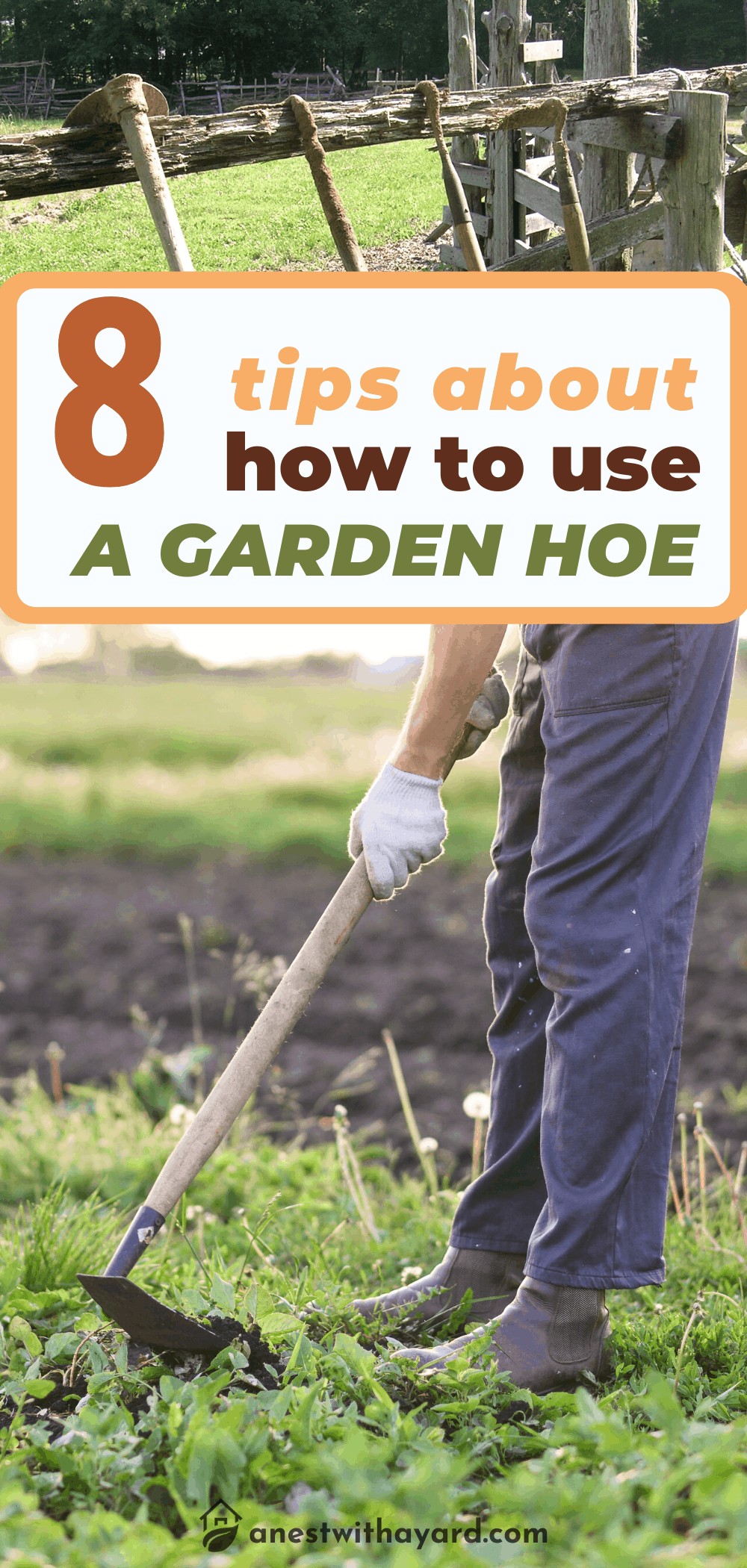Contents
- 1 How To Use A Garden Hoe
- 2 1. Have The Right Hoe For The Job
- 3 2. Wear Gloves
- 4 3. What To Look For In Gardening Gloves
- 5 4. Switch Hands Regularly
- 6 5. Mind Your Posture And Form
- 7 6. Work With The Weather
- 8 7. If Your Hoe Is For Weeding, Use It Often
- 9 8. Make The Most Of Your Garden Hoe
- 10 9. And Of Course, Take Care Of It
- 11 Enjoy The Many Benefits Of Having A Garden Hoe!
- 12 About The Author
How To Use A Garden Hoe
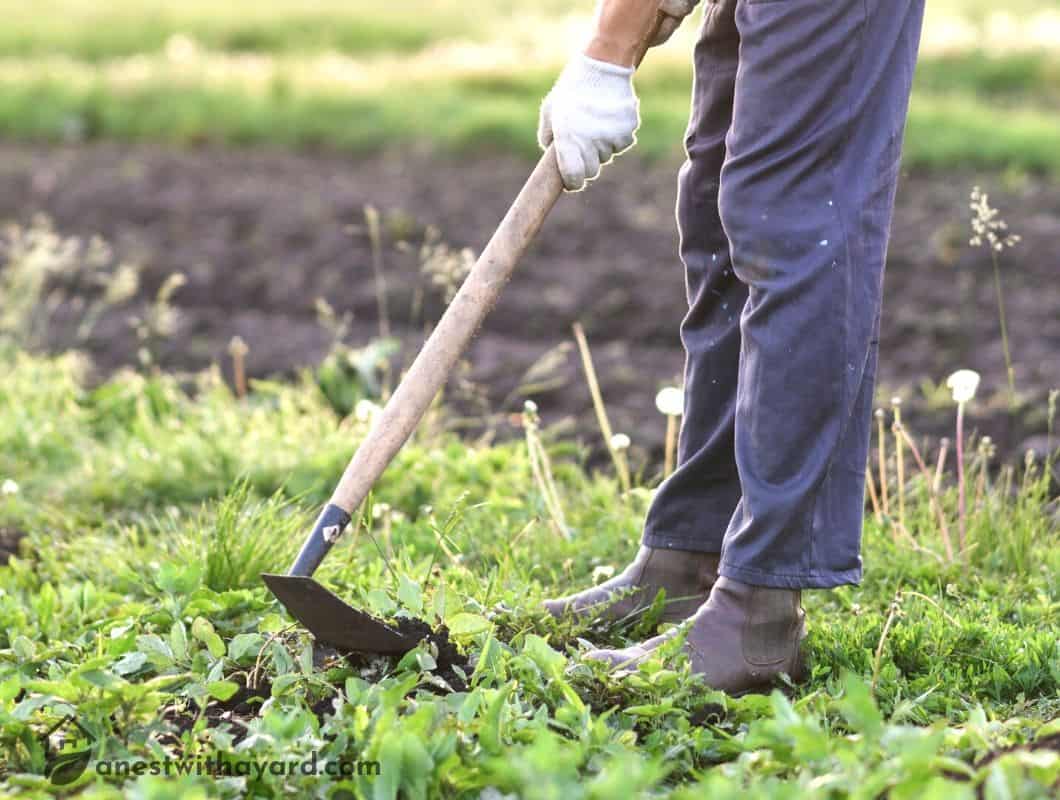
First, choose the right garden hoe head for the job and make sure the hoe handle is not too long. Do not crunch over the hoe. While using the hoe, wear gloves to protect your hands. After you are done, clean your garden hoe and sharpen it often. This is how you should use a garden hoe.
Before you can enjoy its many benefits, you have to know how to use a garden hoe correctly. One wrong move could injure you, get debris in your eyes, or destroy your daisies.
In this article, I’ll go over a few general rules that apply to all or most hoes.
1. Have The Right Hoe For The Job
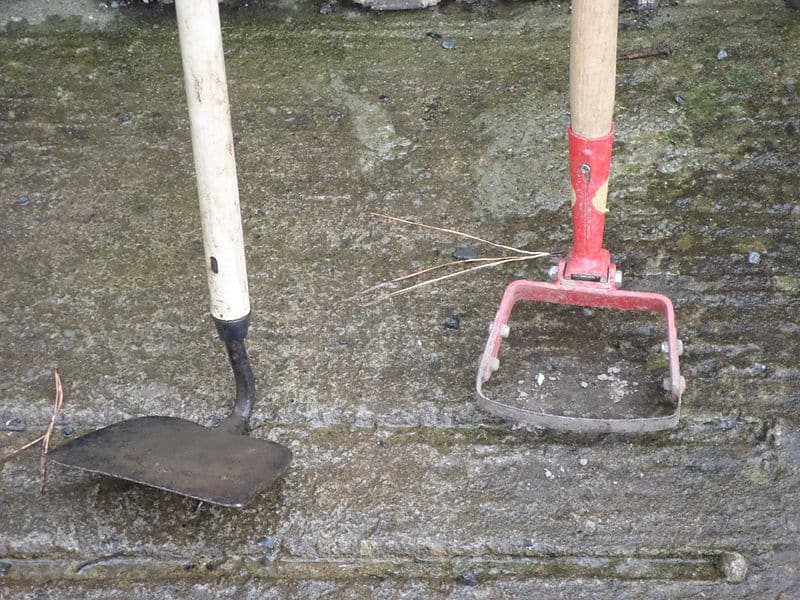
Just because you have a hoe doesn’t mean it’s right for your project. Whereas a hammer is obviously a hammer, different types of garden hoes can look almost nothing like each other because they were made for different uses.
Many hoes — namely stirrup and circle hoes — are excellent for weeding but useless for anything else.
And though grub hoes can be used for weeding, the swinging motion required to use one may lead you to accidentally kill a desired plant.
For more information on different types of hoes, check out my article on nine of them and my comprehensive review list on 11 specific models.
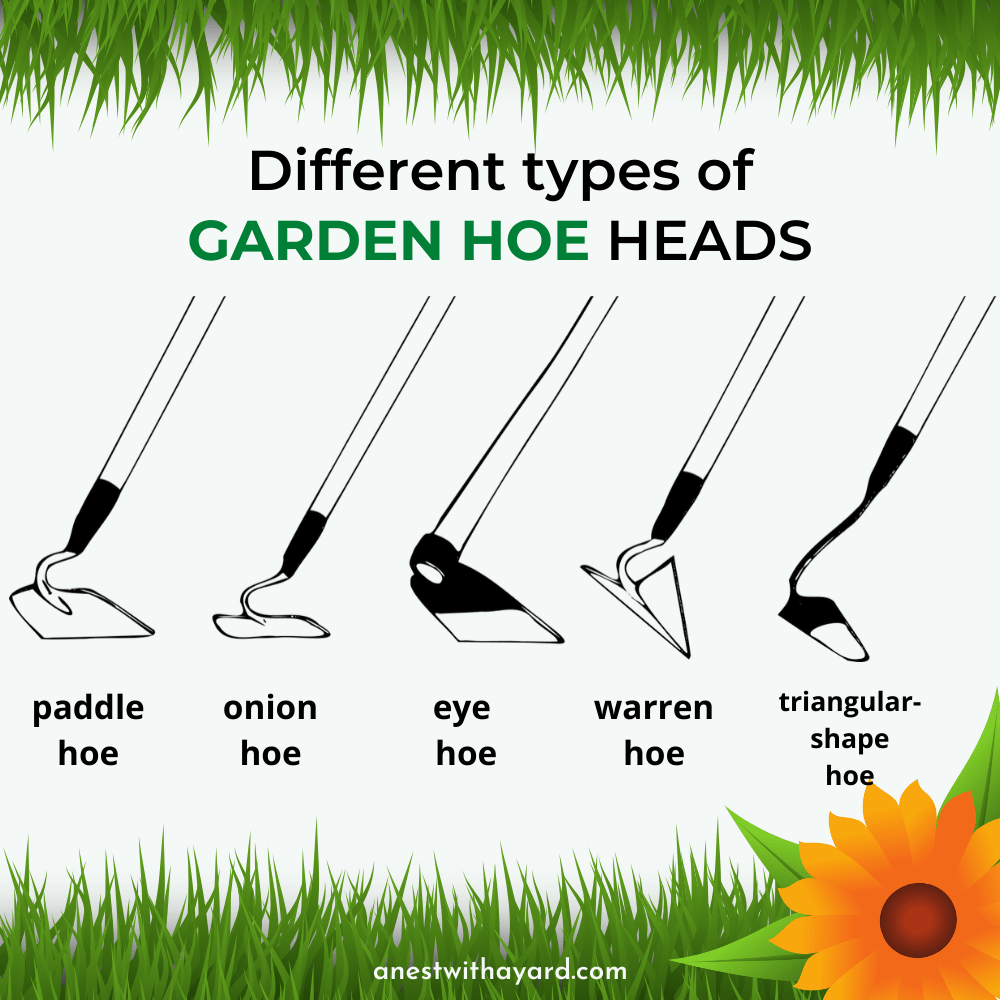
2. Wear Gloves
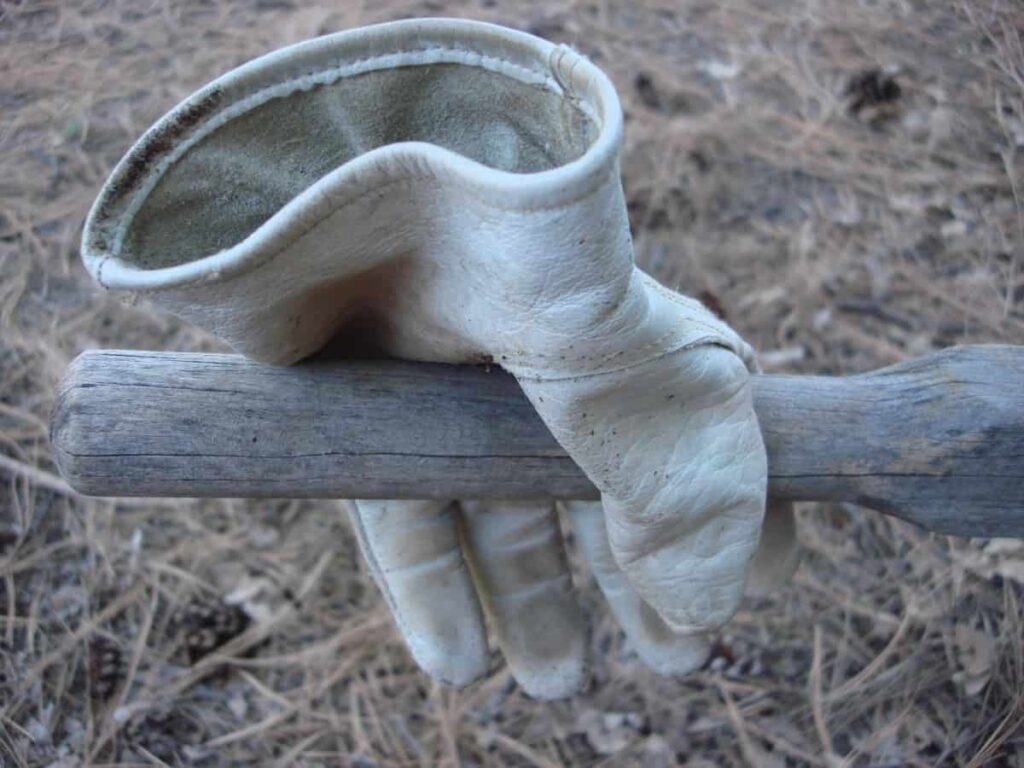
An important part of knowing how to use a hoe is understanding how it affects your body. Though it’s not absolutely necessary, it’s always a wise idea to wear garden gloves when using a hoe (or doing any other outdoor work).
Using handled garden tools — such as shovels, rakes, and hoes — without gloves can give you painful blisters on your hands. Blisters are most commonly caused by friction and the repetitive motion of using these tools causes plenty of repetition.
Besides this friction hazard, any sort of garden work exposes your hands to sunlight, microorganisms (ringworm, anyone?), allergic reactions, scratches, and dirt that can dry out your skin and get under your fingernails.
3. What To Look For In Gardening Gloves
When using a hoe, not just any gloves will do.
- First of all, they need to fit comfortably. Even gardening gloves can cause blisters if they’re too large, as excessive looseness can lead to chafing. Gloves that are too large or too small also make it harder to move your hands freely.
- They should be breathable. Leave your dishwashing gloves in the kitchen! Unless you want to feel like your hands are in a sauna, you should look for a breathable material, such as cloth.
- Last but not least, they should have a good grip. This is especially important if your hoe has a metal handle. Look for gloves that have a gripping material, such as latex, on their palm sides.
I was surprised to learn there was such a thing as bamboo fabric, which is very breathable, moisture-wicking, and stretchy — everything you need in your gardening gloves.
4. Switch Hands Regularly
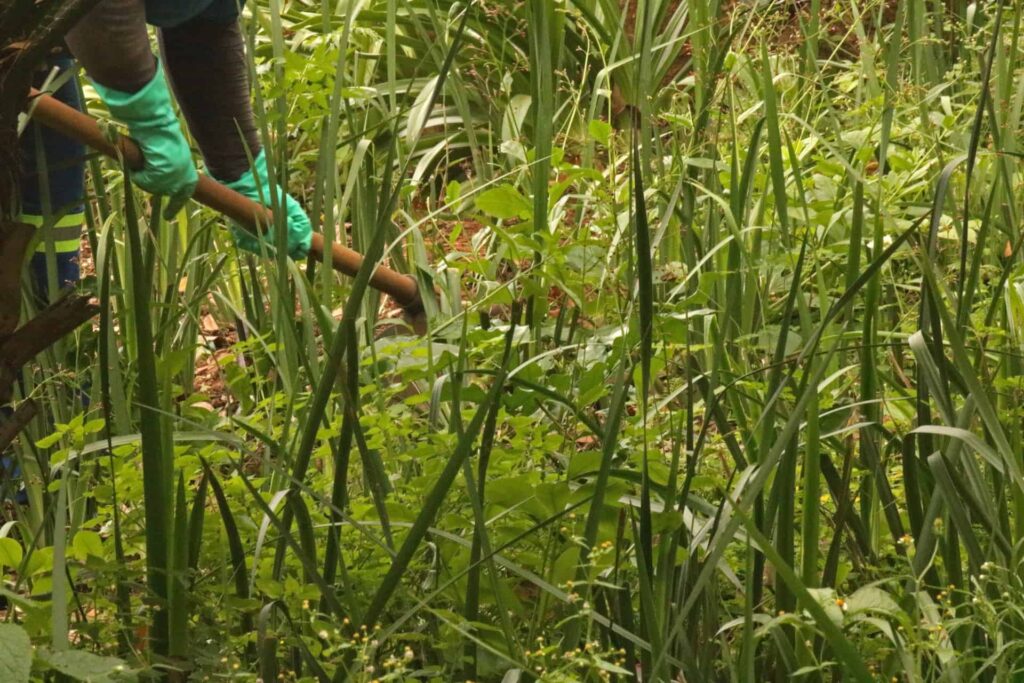
Whether you’re using a small, one-hand hoe or one that requires both hands, you don’t want to overwork one side of your body.
If you’re using a one-hand hoe, hold it in your non-dominant hand whenever your dominant hand could use a break.
If you’re using a two-hand hoe, give each of your hands a turn being the higher or lower one on the handle. It’s especially important to switch hands regularly with larger hoes that require a lot of muscle work, as these pose a higher risk of injury from over-exertion.
5. Mind Your Posture And Form
Hoes are meant to help your body, not hurt it. You should only use a short-handled hoe to avoid damaging tightly-spaced plants.
When choosing a long-handled hoe, it should be tall enough for you to use without crouching over. A good rule of thumb is to choose a hoe that goes up to your armpit, like a crutch. Here’s a helpful video on good gardening posture from Garden Time TV:
There are also right ways and wrong ways to use each type of hoe. Using a hoe the wrong way can lead to overexertion and injury. For example, you should never swing a grub hoe above your head — there’s no need to and doing so can send dirt into your face.
6. Work With The Weather

Whatever you intend to do, outdoor conditions can work with you or against you. For weed removal, the best weather depends on which technique you plan to use:
- One way to kill weeds with a hoe is to cut them slightly below the soil’s surface and leave their roots to die. There’s no better time to do this than when the soil is dry. This is because “dust mulch,” as gardeners call it, prevents weed seeds from germinating.
- Deeply-rooted or perennial weeds may need to be pulled or dug out of the ground. It’s much easier to do either when the soil is wet.
Be aware, however, that a number of problems can result from working in wet soil. It’s only good for weeding and, even for that, you should take precautions.
Stepping on wet or damp soil can compact it, making it less hospitable to your plants. Soil compaction makes it hard for roots to grow and prevents water from reaching them.
For these reasons, try to weed with your feet on a garden path. If you really need to step on the soil, use a board to spread out your weight.
If you intend to use your hoe for digging or tilling, resist the temptation to do it in soft, wet soil. Counterintuitively, doing so can still compact the soil by destroying its fluffy structure, causing dense, inorganic components to settle together.
If you can squeeze your soil into a ball of mud, it’s too wet to work with. Wait until it’s dry enough to crumble through your fingers.
7. If Your Hoe Is For Weeding, Use It Often
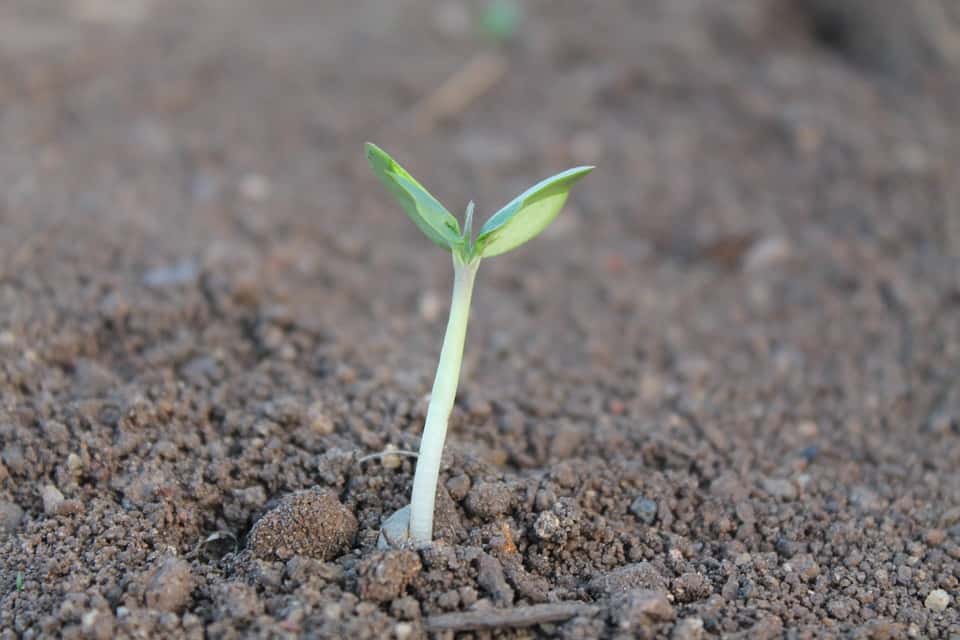
With a well-sharpened weeding hoe, you can kill weeds by making a sweeping motion across the soil. Do this at the first sign of new weeds so they won’t have an opportunity to multiply or grow deep roots.
If you have a weed with deep roots, you can gradually kill it by cutting it back down every time it sends up shoots. The plant should eventually run out of energy and die.
8. Make The Most Of Your Garden Hoe
You should know how to use a hoe in as many ways as possible. Though most hoes are built for specialized purposes, you can use some of them creatively to get more bang for your buck.
For example, a triangular hoe may be especially good for digging furrows, but the corner of a rectangular hoe can do the same thing.
If you want an extremely versatile garden hoe, consider a grub hoe. It’s great for digging, weeding, shaping soil, and even breaking through ice on your roof! Scott Head calls his grub hoe his “go-to tool”:
9. And Of Course, Take Care Of It
An important part of using any tool is keeping it useful! A frequently-used garden hoe has a rough life. Keep it in tip-top shape with these steps:
Keep It Clean
Not only is dirt unsightly, it can hide the condition of your garden hoe. For all you know, your mud-covered hoe may be rusted or dull. If it has a wooden handle, there’s no telling what condition it’s in.
To clean your garden hoe, begin by scrubbing it all over with a dry, stiff bristle brush to remove caked-on dirt. Then, you can scrub it again with warm water to remove more stubborn dirt. Rinse off the entire hoe with warm water, dry it with a towel, and let the air dry any remaining moisture.
Don’t Let It Rust
If you see rust on your hoe, scrub it off with 80-grit sandpaper.
You can prevent your hoe from rusting by oiling it. Don’t use any type of oil that shouldn’t be in your garden! Garden Tool Co. recommends boiled linseed oil, which is made from flax seeds.
Keep The Blade Sharp
Most hoes are only as useful as they are sharp, so periodically sharpen your hoe’s blade with a flat-file or other sharpening tool.
Make sure you wear safety goggles and thick gloves whenever you sharpen metal — small slivers can fly off and land anywhere, not to mention that a just-sharpened tool could cut your hands.
Here’s a helpful demonstration on how to hand-sharpen a hoe:
Sand Down And Oil Wooden Handles
If your garden hoe has a wooden handle, moisture can gradually give it a rougher texture. You can smooth it down with sandpaper. For maximum smoothness, Garden Tool Co. recommends starting with 80-grain sandpaper and finishing the job with 120-150-grit paper.
You can protect a wooden handle from moisture by oiling it.
Enjoy The Many Benefits Of Having A Garden Hoe!
Now that you know how to use a garden hoe, you can garden more efficiently, weed without herbicides, and keep your hoe in good shape for years.
Did you enjoy this article? If so, please share it with like-minded friends. Also, feel free to share your thoughts in the comments below.
